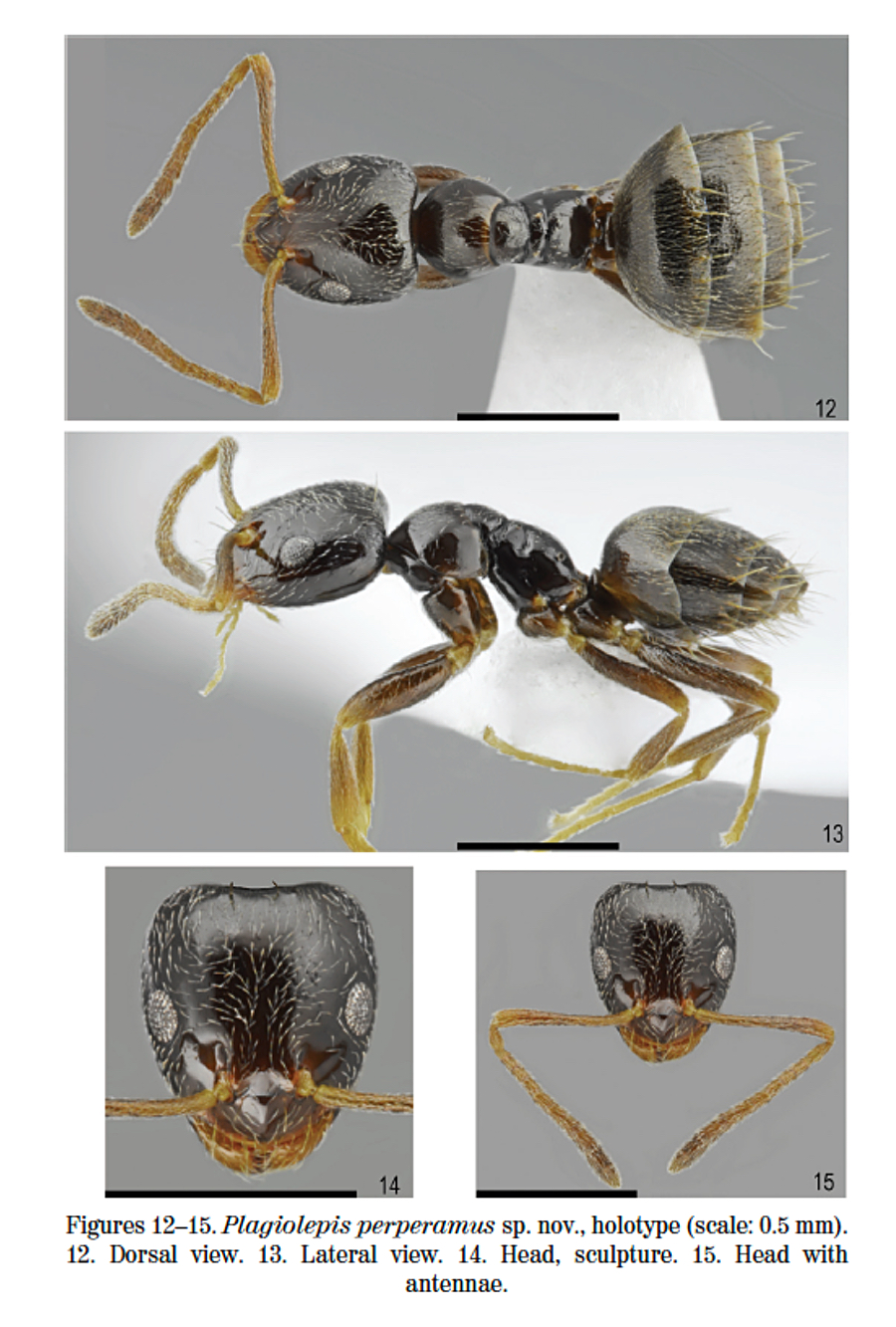 Holotype
illustration from Salata, Borowiec & Kravchenko (2018)L Borowiec
(2018) - Type material. Holotype
illustration from Salata, Borowiec & Kravchenko (2018)L Borowiec
(2018) - Type material.
Holotype (w.)
(CASENT0845955 - on Antweb this is numbered CASENT0763860): Collection
L. Borowiec | Formicidae; LBC-GR00042; GREECE, NW Crete, 3 km S
Askifou, 800 m a.s.l., 35°16’N 24°10’E, 1.v.2007, L.& M.L. Borowiec
(MNHW) (Figs 12–15)
Description:
(from Table 1, approx means) TL 0.50 HW 0.47 HL 0.45
SL0.46 PW 0.32; CI 93 SI 91
Whole body from brown to dark brown. Legs, scapes and up
to 4 first segments of funiculus brighter, from brown to ochre. Head
longer than wide, trapezoidal, its sides always convex, occipital
margin nearly straight or concave. Clypeus shiny, its posterior edge
convex, setosity sparse and
long, setae subdecumbent. Surface of head smooth and shiny, bearing
short, sparse and adjacent setae (Figs 14–15). Scape reaches beyond the
occipital margin, widening upward from 3/4 of its length, its surface
shiny, with feeble, moderate microreticulation, dense, adjacent
microsetae covers its whole surface. The second funicular segment
square or slightly rectangular, the third segment elongate, equal or
only slightly shorter than the fourth one,
the rest of funicular segments clearly longer than broad. Eyes big,
oval, 1.3 times as long as wide. Mandibles triangular, short with a row
of well-developed teeth (Figs 14–15). Mesosoma elongate, 1.7 times as
long as wide. In lateral view dorsal surface of promesonotum slightly
convex, metanotal groove shallow, propodeum with convex dorsal and
straight or slightly concave posterior sides. The whole mesosoma smooth
and shiny, bearing sparse, short and adjacent micropilosity (Figs
12–13). Petiolar scale thin and short, its anterior and posterior sides
slightly convex, apex concave, its surface smooth and shiny (Figs
12–13). Gaster longer than mesosoma, shiny with sparse
microreticulation, bearing dense, adpressed setae, the
distance between setae shorter than 1/3 of their length, additionally
thick, long hairs occur on posterior margins of all tergites (Figs
12–13).
Distribution.
Greece: Crete, Aegean Is., Ionian Is., Cyclades, Dodecanese, mainland;
Iran: Khuzestan; Turkey: Antalya Prov.
Biology.
Species associated with humid areas overgrown by macchia or forests.
Nesting in soil, most often below rocks. Workers were observed in the
material collected by beating sheet from blackberry bushes. Colonies
polygynous.
|